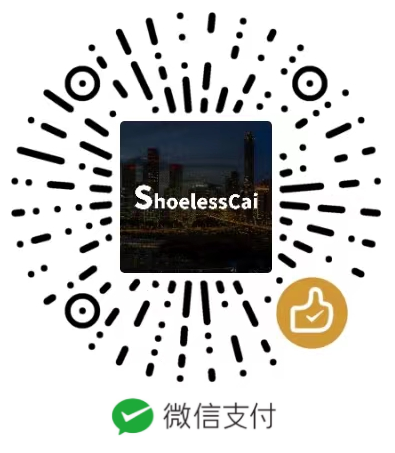
封面故事:来自彭博周刊
彭博推送 | 申请国外的学校变得更加不清晰了
本文由 Jingyi 翻译,百度翻译校对。
译文
美国更高教育被怀疑
美国更高等的教育面临怀疑。随着部分学院成本逐渐攀升至 10 万美元每年,以及数以百万美国人,挣扎着支付其学生贷款,越来越多的家庭在质疑,关于学校学位的价值。
常青藤院校以及其他精英大学,仍然充斥着申请,加速了竞争激烈的竞争,但是小型的、私人的学院,在高成本之下也是被折叠了,以及入学人数减少。
过去几年既然特别喧嚣,美国最高法院有效地禁止录取有种族意识的人,迫使学校找到新的方式,维护其多样性的目标。2023 年 10 月 7 日,以色列受到攻击,以及之后加沙地区的战争,将这些校区转变为紧张和抗议的“温床”。同时,行政人员被迫应对棘手的地缘政治问题,在国家媒体的注意力和显微镜之下。
tumultuous 喧闹
race-conscious 种族意识
ramping up 加速
cutthroat 残酷的,竞争激烈的
dwindling enrollment 入学人数减少
Gaza 加沙
grapple with thorny geopolitical issues 应对棘手的地缘政治问题
thorny geopolitical issues 地缘政治问题
grapple with 应对
在这个大背景(backdrop)之下,备受追捧的学校重新思考,他们要怎么选择学生。针对申请者,其方法及过程,都要比之前更加不清晰。
“这变得更加有竞争力及不确定” Eric Tipler 说到,他是《将你自己写入 Write Yourself In》的作者,这是一本指导书,关于如何写论文的。“关于不能确定什么样的人能进入学校,而且对家庭来说也是很不确定的,关于‘这个游戏的规则是什么,我如何为我小孩准备好成功的道路?’”
highly sought-after schools 备受追捧的学校
murkier 昏暗的
哈佛大学以及其他院校加了些问题,加入其申请中,关于2029年这一届的学生,强调了这一点“关于录取多样性学生的重要性”,以及询问学生,他们如何“将生活体验来形成你这个人,导致你能够向社会贡献”,这些问题对学校的意义,他们要阐述。
然而,一手关于人口统计学的资料也承认,在 2023 年 6 月之后,地标性的最高法院的决策,显示大多数精英学校,招收更少非裔,相较于以前年度。
学校还质疑了其他问题吗?学生是否知道,如何与这些他们不同意的人相处。经过一年的反抗,体现在加沙的战争,哈佛正在请求学生讨论,“一度你曾经极度反对的一些人的想法或者议题”。
这并非所有招生办担忧的事情。AI 的兴起,为大学造成了问题,就是大学论文的有效性 —— 至少,谈到写作能力的时候。学院也和 AI 识别器相互竞争,还会把学生写的论文标记成“抄袭论文”。
contend with 与……竞争
杜克大学认为,今年早些时候申请论文,不再会获得数值分数,随着招生办阅读越来越多提交(论文),(其内容)“主要是理解生活经验”,依据 Christoph Guttentag 的说法,这人是杜克大学本科生院校的招生官。
最后,毫无意外地,标准测试又被提及(making a comeback),在一场快而广的疫情袭击之后。精英学校包括布朗、达特茅斯、哈佛、耶鲁,将标准测试带回课堂,为今年的申请生做准备,并声称,他们是可靠的指标,用以衡量成功和帮助识别从低收入奋斗的高度成功人士,以及乡村背景。
hiatus 中断
这并不象可选测试政策,会让阻止人们谈论 SAT。大约有 200 万高中生参与 2024 年测试,至少会经历一次,依据大学董事会的报告。在其背后运营的 NGO,他们支持的。尽管 SAT 参与者和疫情之前参与者有差异,比前一年有所上升的。
“从学校观点而言,这涉及获得越多越好,如果准备一场申请的话。” Jamie Moynihan 说到,大学咨询总监,在 AcceptU 工作。“这并非必须的决定因素,但这是一种背景,没有这些的话,会使得区分学生变得更加困难。”
简报
1.一场严重的大肠杆菌事件和麦当劳的大汉堡有关,使得几十人生病,在美国还致死一个人
2.美国二套房的销量下降了,达到 14 年以来最低点
3.安东尼布林肯州的秘书,进入沙特阿拉伯,持续地推进进一步休战,在地区冲突中
E. coli 大肠杆菌
Quarter Pounders 大汉堡
State Antony Blinken 安东尼 布林肯州
找寻应对野火的盈利方式
八月的氛围浓重而充满着附近野火的香气,随着一辆卡车拖着 20 吨的木材,进入 Heartwood Biomass Inc.,他是一家设备商,在加州 Jamestown。“一些干木材,这是我们所要的。”像这样的木材,对于很多其他公司来说,要么太易碎,要么太腐烂,无法使用,Heartwood 生产了超过 30 万生火的木材,自从 6 月在 Sierra Nevada 开工厂开始。
这是小而简答的业务,目标是解决大而复杂的问题:危险生长的森林,在美国西部。仅仅在加州,世纪大火的袭来(suppresion),使得很多州的 3300 万英亩的森林,拥挤不堪,随时可能被烧毁。特别随着气候变化使得气温骤升。在 2020 年的时候,加州及美国的林业局,设置了一个目标,来减少野火威胁,通过治理森林,每年处理 100 万英亩。这项任务预估,消耗 20 - 40 亿美元 —— 使用给树瘦身的方式,规定烧伤级别,以及其他方法,包括投资像 Heartwood 这样的公司。
suppression 抑制,镇压
自从 2021 年,该州拨出了 700 万美元,投资到关键项目中,专注于变现森林废弃物,以及额外提供几百万的授权,授权关于生物燃料的研究、劳动力发展和其他创新。联邦政府也在提供资金,用以森林商业化业务,消除野火的风险:部分目标是治愈另外 5000 万英亩的森林,在 2032 年之前。美国林业局资助了木制隔音材料的创业公司,还扩展到 Oregon,交叉层压木材项目,使用的是 Montana 剩余的木材,研究如何发展出生物材料的市场,在西南部地区。
insulation 绝缘体,隔音,隔热
cross-laminated timber project 交叉层压木材项目
cross-laminated timber 交叉层压木材。类似于复合板,把不同木材放一块,压制成新木头
biomass market 生物材料的市场
laminated 层叠的
2018 年,当 Lance Allen 接管了 Home Depot 假期购物部门的战略任务,他将关注点聚焦在扰乱 120 亿美元的万圣节市场。
当时,Home Depot 及其竞争者都出售同样版本的装饰:18 英寸的蜘蛛,用 LED 做的。人形僵尸,以及充气的电影人物,在其他的奇怪的商品中。找寻一些新东西,Allen 在 Home Depot 开启了职业生涯,出售电动商品,和他的团队忙于工作,参观鬼屋,晚上的恐怖活动,这些在洛杉矶的环球影城都是有的,这都属于万圣节商业。
disrupting 打扰,扰乱
inflatable 充气的
visiting haunted houses 参观鬼屋
某种程度上,他实现了。几项和万圣节有关的景点,装饰着大型塑料骷髅,高耸在参观者的头顶。他们是很震撼视觉的,还有些不吉利的,然而,没有什么像这些一样,为每天的消费者而存在。Home Depot 可以填补一个骨头形状的缺口。
festooned with 装饰着
towered over 像塔一样站着,高耸着
ominous 不吉利的
原文
Higher education in the US is facing a reckoning
Higher education in the US is facing a reckoning. As costs creep toward $100,000 a year at some schools, and millions of Americans struggle to pay their student loans, more and more families are questioning the value of college degrees.
Ivy League schools and other elite universities are still flooded with applications, ramping up the cutthroat admissions competition, but smaller private colleges are folding under high costs and dwindling enrollment.
The past year has been particularly tumultuous. The US Supreme Court effectively banned race-conscious admissions, forcing schools to find new ways to maintain their diversity goals. The Oct. 7, 2023, attack on Israel and subsequent war in Gaza turned campuses into hotbeds of tension and protest, with administrators forced to grapple with thorny geopolitical issues under the microscope of national media attention.
Against this backdrop, highly sought-after schools are rethinking how they select their students. For applicants, that means the process is murkier than ever.
“It’s gotten more competitive and more uncertain,” says Eric Tipler, author of Write Yourself In, a guide to writing college essays. “Uncertainty vis-à-vis what schools kids will get into, but also for families a lot of uncertainty about ‘What are the rules of the game, and how can I set my kids up for success?’”
Harvard University and other schools added questions to their application for the class of 2029, underscoring “the importance of enrolling a diverse student body” and asking students how “the life experiences that shape who you are today enable you to contribute” to the school.
Still, demographic information for the first class admitted after the June 2023 landmark Supreme Court decision showed most elite universities enrolled fewer Black students than in past years.
Another question colleges are asking? Whether students know how to engage with those they disagree with. After a year of protests over the war in Gaza, Harvard is asking students to discuss “a time when you strongly disagreed with someone about an idea or issue.”
That’s not all that has admissions offices worried. The rise of artificial intelligence is making colleges question the validity of application essays—at least when it comes to signaling writing ability. (Colleges are also contending with AI detectors that falsely flag some student-written papers as cheating.)
Duke University said earlier this year that application essays will no longer get numerical scores, with admissions officers reviewing the submissions “primarily to understand the student’s lived experience,” according to Christoph Guttentag, the school’s dean of undergraduate admissions.
And lastly, probably not surprisingly, standardized tests are making a comeback after a quick pandemic-induced hiatus. Elite schools including Brown, Dartmouth, Harvard and Yale have brought the exams back for students applying this year, arguing they are a reliable indicator of success and help identify high achievers from low-income and rural backgrounds.
It’s not like test-optional policies were stopping students from taking the SAT. Almost 2 million students in the high school class of 2024 took the test at least once, according to a report by College Board, the nonprofit behind the tests. Although SAT participation is not at pre-pandemic levels, it’s up from a year prior.
“From a college’s standpoint, it’s about obtaining as much context as possible for an application,” says Jamie Moynihan, managing director at college counseling firm AcceptU. “It isn’t necessarily a deciding factor, but it’s context that, without it, makes it more challenging to differentiate some of these students.”
Brief
1.A severe E. coli outbreak tied to McDonald’s Quarter Pounders sickened dozens of people in the US and killed one.
2.US sales of previously owned homes declined to an almost 14-year low in September.
3.Secretary of State Antony Blinken heads to Saudi Arabia, continuing his push for a broad truce in the conflicts in the region.
Seeking a Profitable Way to Prevent Wildfire
The August air is heavy with the scent of a nearby wildfire as a truck hauling 20 tons of wood pulls into the Heartwood Biomass Inc. facility in Jamestown, California. “Some dry logs, that’s what we want,” says Matt King, the company’s vice president for sales and innovation, as the desiccated timber rumbles past on its way to unload. With wood like this, which for many other companies is too brittle or rotten to be useful, Heartwood has produced more than $300,000 in firewood since opening its plant in the Sierra Nevada foothills in June.
It’s a small, simple business aimed at a big, complicated problem: the dangerously overgrown forests of the US West. In California alone, a century of fire suppression has left many of the state’s 33 million acres of forest crowded and ready to combust, especially as climate change drives up temperatures. In 2020, California and the US Forest Service set a goal to reduce wildfire risk by treating 1 million acres a year—a task estimated to cost $2 billion to $4 billion—using tree thinning, prescribed burns and other approaches, including investing in companies such as Heartwood.
Since 2021 the state has set aside $7 million for pilot projects focused on monetizing forest waste and offered millions more in grants for biomass fuel research, workforce development and other innovations. The federal government is also financing forestry businesses to mitigate wildfires: As part of its goal to treat an additional 50 million acres of forest by 2032, the US Forest Service has funded a wood insulation startup expanding into Oregon, a cross-laminated timber project using wood leftovers in Montana and research to develop a biomass market in the Southwest.
When Lance Allen took over strategy for Home Depot Inc.’s holiday merchandising team in late 2018, he set his sights on disrupting the $12 billion Halloween market.
At the time, Home Depot and its competitors were all selling similar versions of the same decorations: 18-inch spiders with LED lights, human-size zombie figures and inflatable movie characters, among other spooky wares. Looking for something new, Allen, who started his career at Home Depot selling power tools, got busy with his team, visiting haunted houses, late-night horror events at Universal Studios in Los Angeles and Halloween trade shows.
At some point he had a realization. Several of the Halloween-themed venues were festooned with giant plastic skeletons that towered over the heads of attendees. They were visually striking and just a little ominous, but nothing like them existed for everyday consumers. There it was: a bone-shaped opening Home Depot could fill.
原文链接
长按/扫码,有您的支持,我们会更加努力!


|
